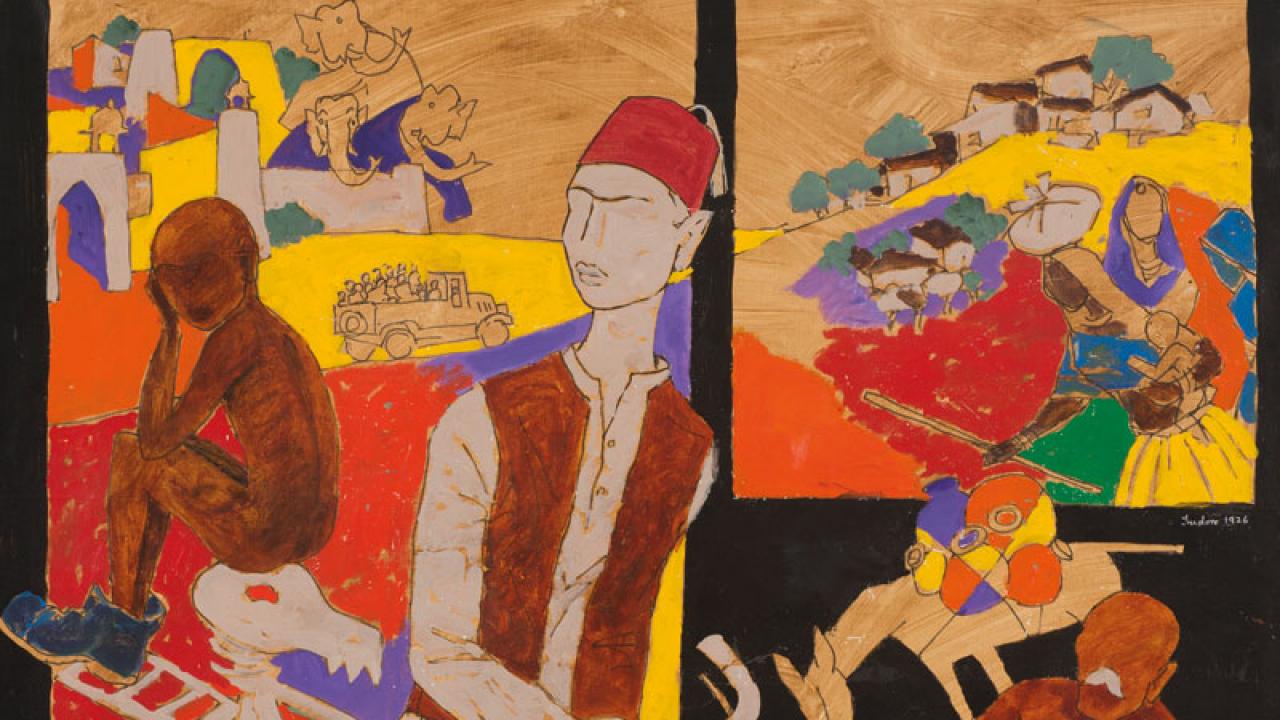Everyday Things
The spectres of the culture wars
The spectres of the culture wars

In the depths of summer – before the pressure of a military strike on Syria drove all of Lebanon into apocalyptic despair, followed by deep confusion when the strike option disappeared – the Beirut Art Center opened an exceptionally strong exhibition of objects, photographs and drawings by the French artist Jean-Luc Moulène.
On the face of it, there was a clear and uncomplicated way to do this show. Since 1999, Moulène has spent a decent amount of time in Lebanon and has made numerous projects that relate to it. The Beirut Art Center could have easily gathered them all into an accessible, crowd-pleasing affair that played to local tastes and satisfied the tendency toward parochial self-regard. To the young institution’s credit, however, it didn’t, opting instead to present a complex exhibition of 40 works that captured the artist at his most brilliant and inscrutable.
‘Jean-Luc Moulène – Works’ spoke to the pleasures of making and the deceptive banality of ordinary, everyday things. It also included a photograph of an indistinct lump on the ground, tangled up in cassette tape, which inspired the choice title of a review posted in early August by Myriam Dalal on Beirut.com: ‘Literal piece of shit on exhibit at Beirut Art Center.’ Dalal is not, strictly speaking, a critic; she writes a column titled ‘WTF’ which has covered subjects including crocodile sightings in the Beirut River and a woman who killed her husband and cut him into pieces with the help of her teenage sons.
In her post about Moulène’s show, Dalal made a reference to Piero Manzoni but took an otherwise conservative stance against the work, the artist, the Center and contemporary art in general. Sassily written, the review was contemptible in its breezy dismissal of Moulène’s work as ‘baseless and devoid of any real creativity’. Not to be fooled by anyone trying to pass off a picture of shit as a piece of ‘genuine art’, Dalal fell into a pattern of right-wing critical response that was both familiar and out of place. The staff of the Beirut Art Center were outraged: Dalal had never bothered to see the exhibition, claiming she was entitled to extrapolate from a single image, which she saw on Twitter, and form an opinion from that.
What was the ghost of Jesse Helms doing here? Why reignite the same fiery scandals that engulfed the work of Karen Finley and Chris Ofili at either end of the 1990s? How did Beirut get stuck with this small skirmish in the culture wars – never ending, rarely rewarding and mostly crippling for a non-profit arts institution that has pledged itself to the life of a city and its people, most of whom are facing serious if not deadly daily hardship?
This was a Levantine twist on an old tale. In 1994, The New Yorker’s dance critic Arlene Croce announced in print that she had not seen the choreographer Bill T. Jones’s new performance Still/Here (which delved into the experiences of people with terminal illnesses), had no plans to review it, and then wrote thousands of words explaining why. (In brief, she wanted to resist being manipulated by a form she described as ‘victim art’, which, in her view, made a spectacle of suffering at the height of the AIDS epidemic.)
Compared to Dalal, Croce is excruciatingly erudite in her defence of the critic’s task. Yet both pieces falter on the same fact. A critic abdicates his or her authority in writing about work that goes/remains unseen. The problem, however, is not only one of professionalism. It’s also about what gets smuggled into emerging contemporary art scenes as they are becoming visible.
With the centres, institutes and alternative art schools based on internationally legible models come the exhausting and ultimately debilitating issues that are everywhere the same. The market will suck the air out of every room, populism of the worst kind will bear down on us all, and politics will continue whether artists are part of the conversation or not.
Ultimately, Croce’s point was that critics had lost their place in New York. What exacerbates the situation in cities like Beirut, Cairo, Damascus or Istanbul is a tradition of criticism that is anemic-to-nonexistent from the start, and heavily burdened by issues of language, translation and a highly politicized press. Such as they exist, critics in those cities have no place to lose. The Middle East is far behind Latin America, Eastern Europe and South Asia when it comes to art-historical scholarship, and criticism provides only the first level of sourcing.
Defending art against a writer who refuses to see, like fretting about the market in the midst of political upheaval, means turning away from the world when the stakes are arguably highest. The most challenging and rewarding art is rarely simple. The point is not to shut it down but to prise it open. Artists have the option to retreat when their work is done. Critics owe it to them, and to their readers, to keep the work alive and engaged in public discourse. To do so we can only write what we see, while keeping an eye out for old ghosts and proxy wars.
























